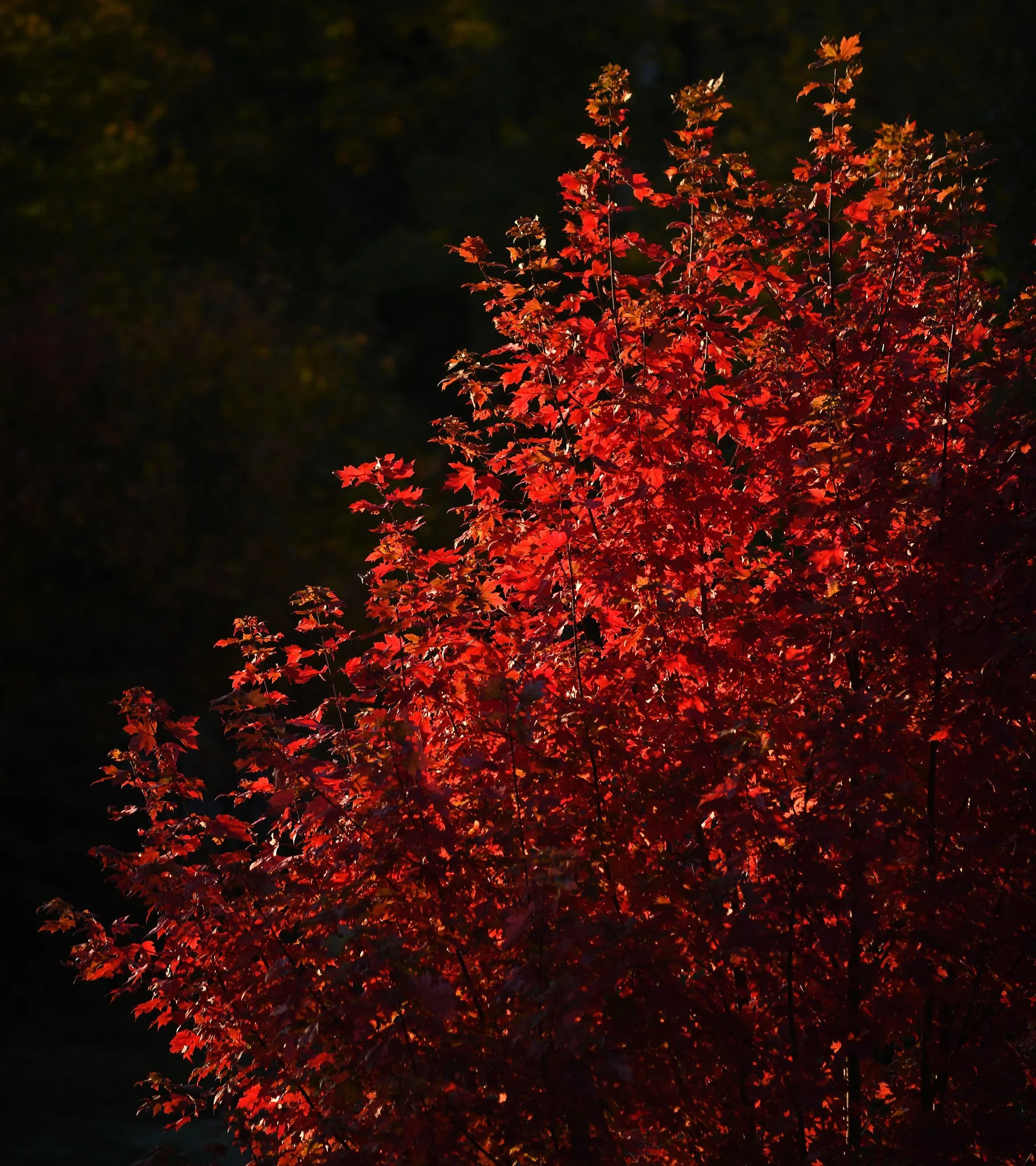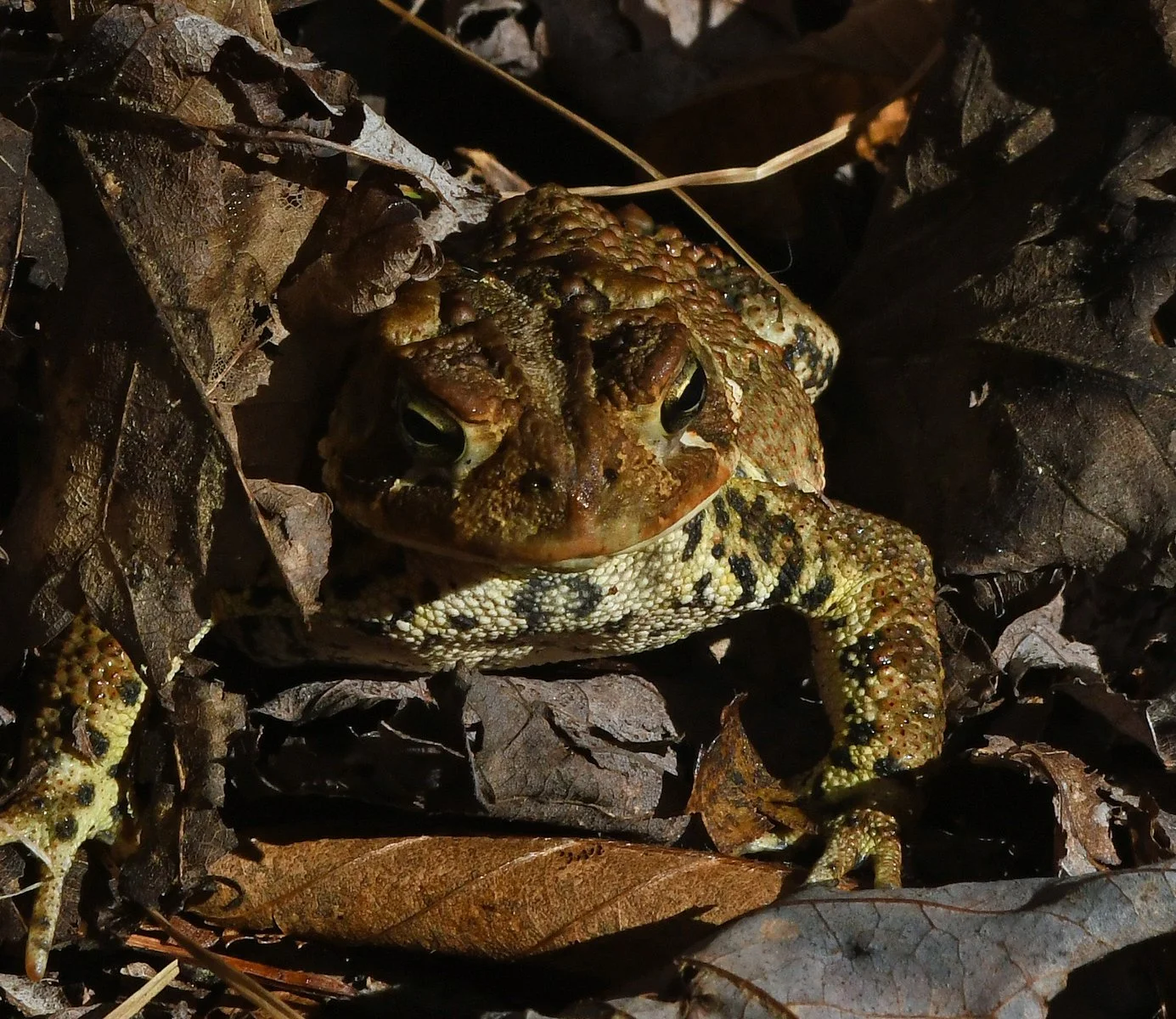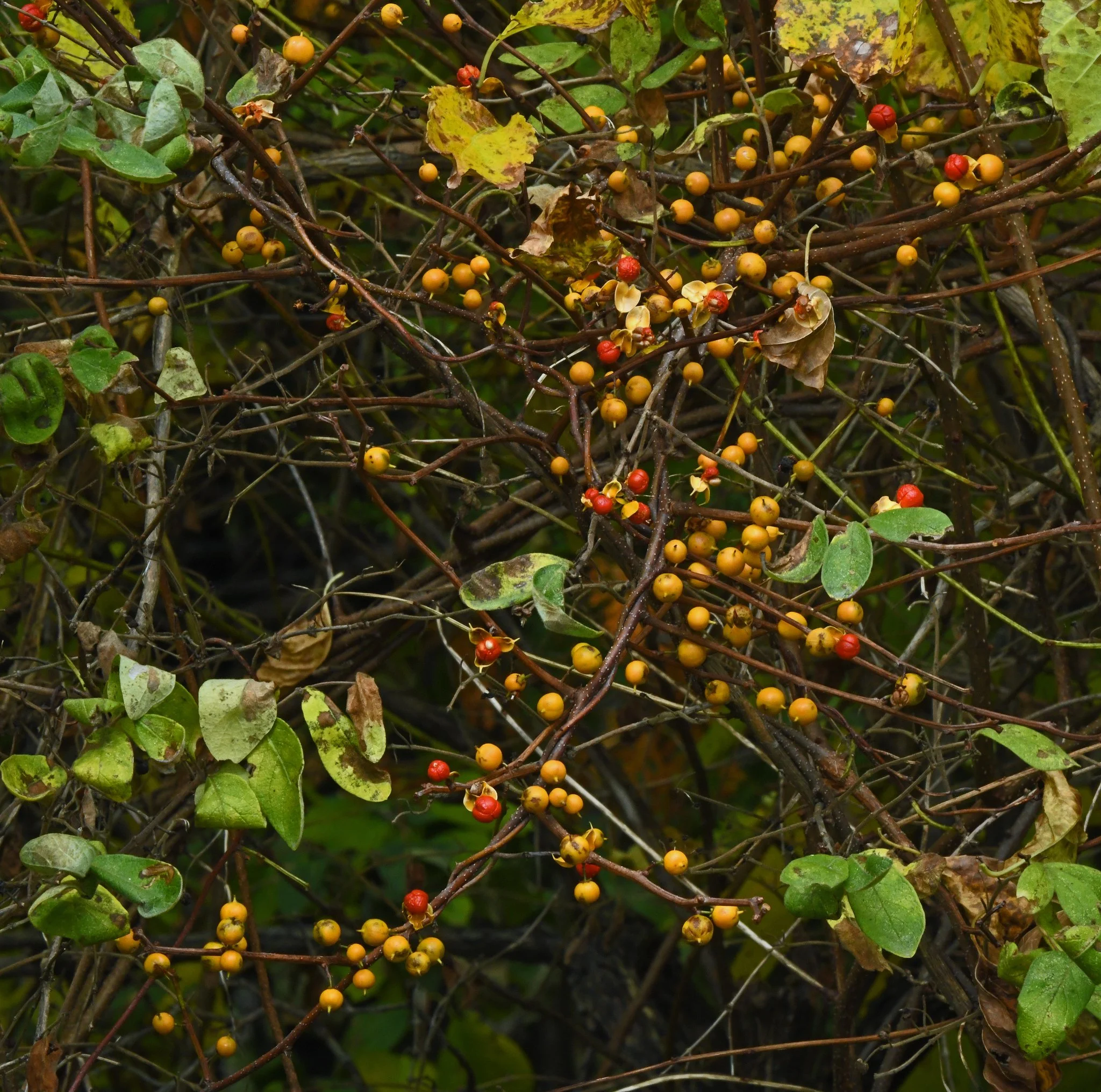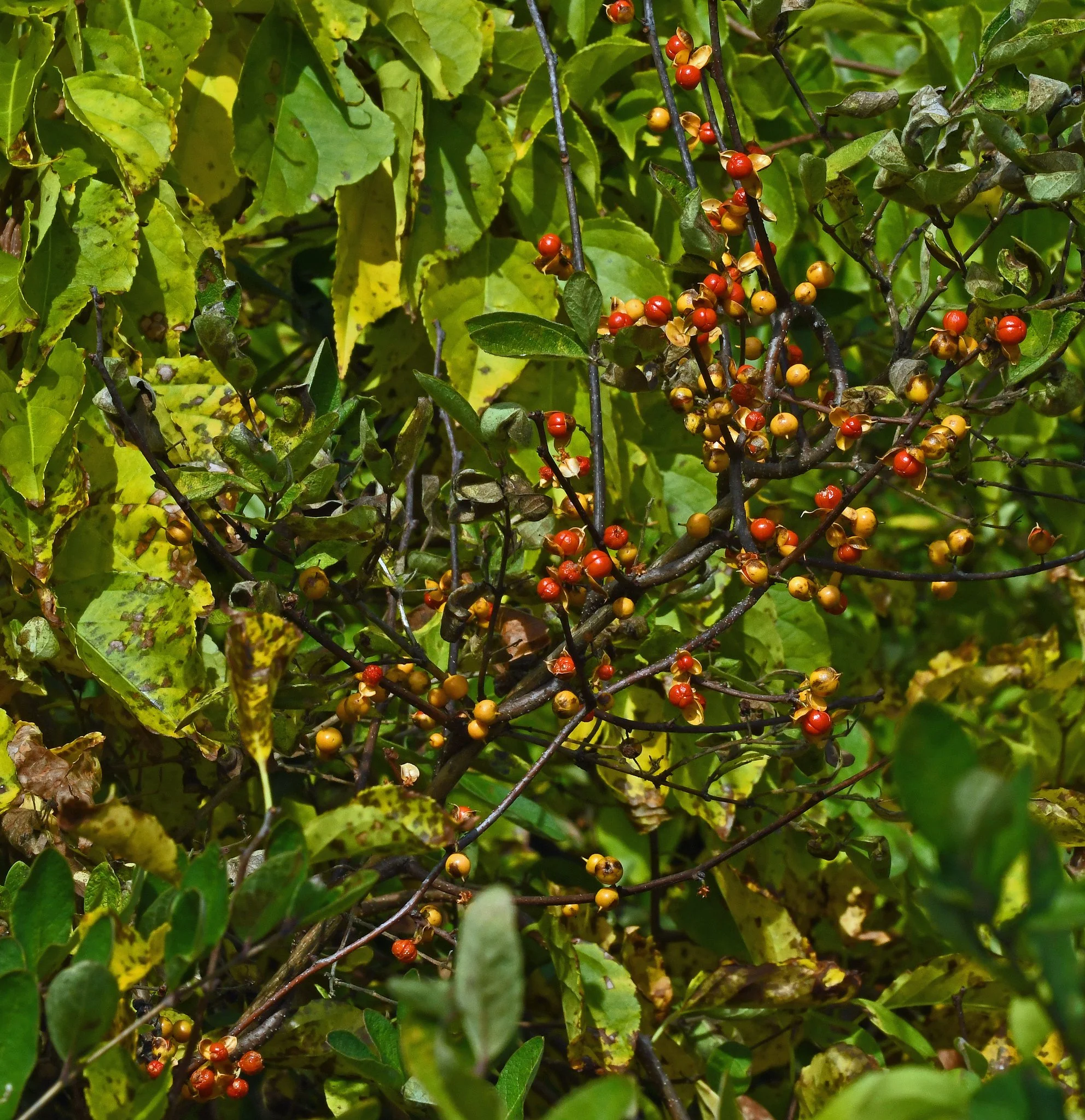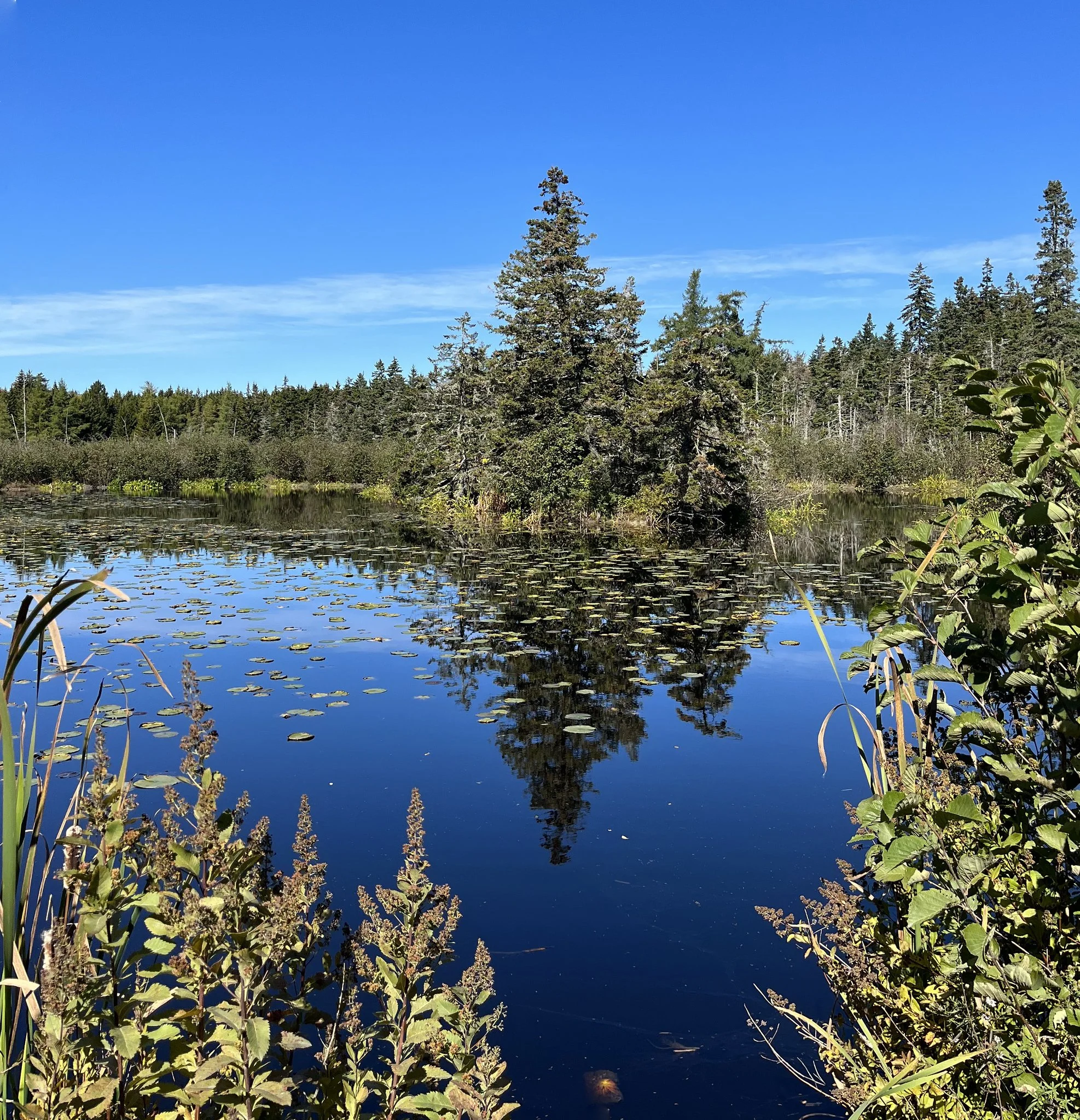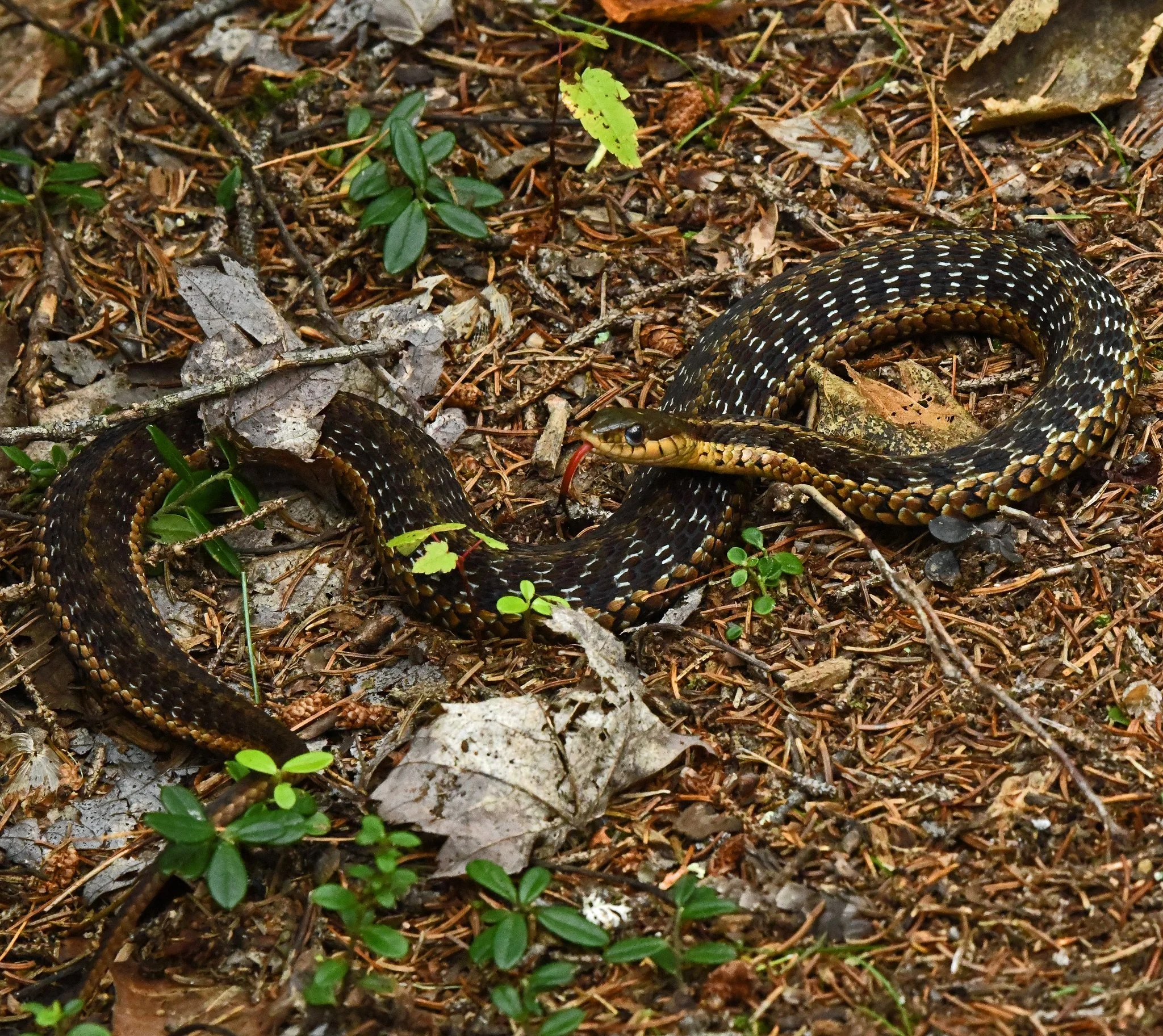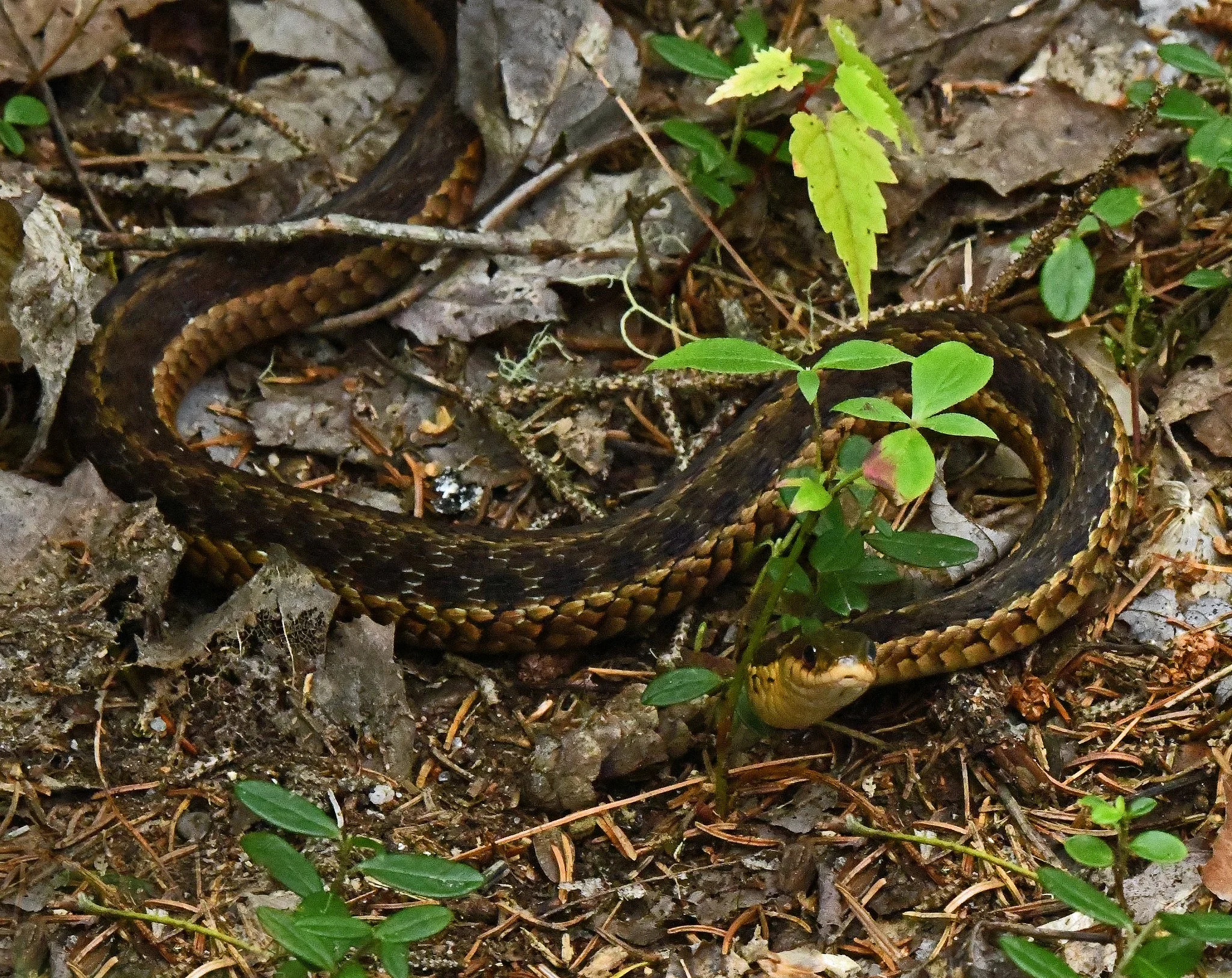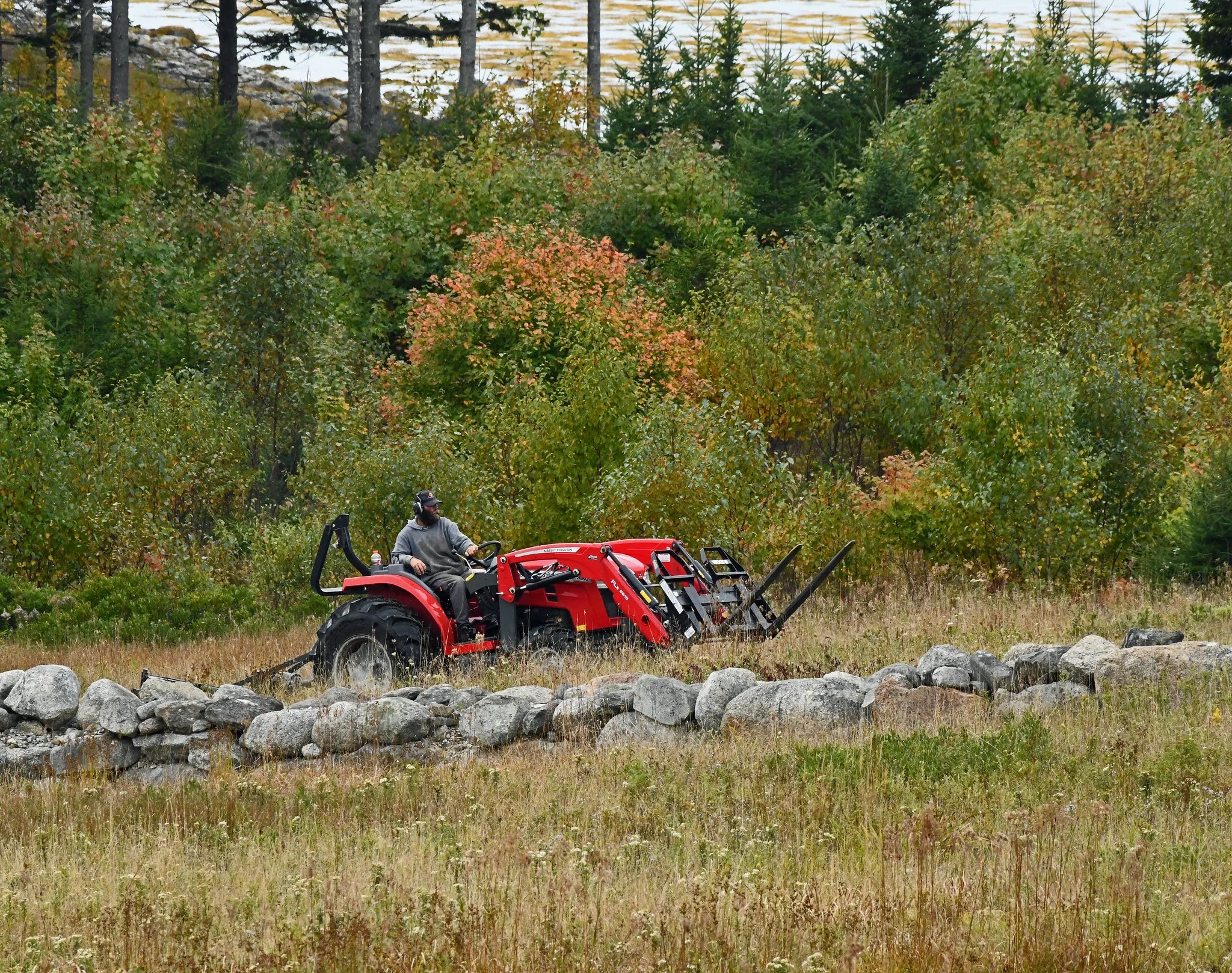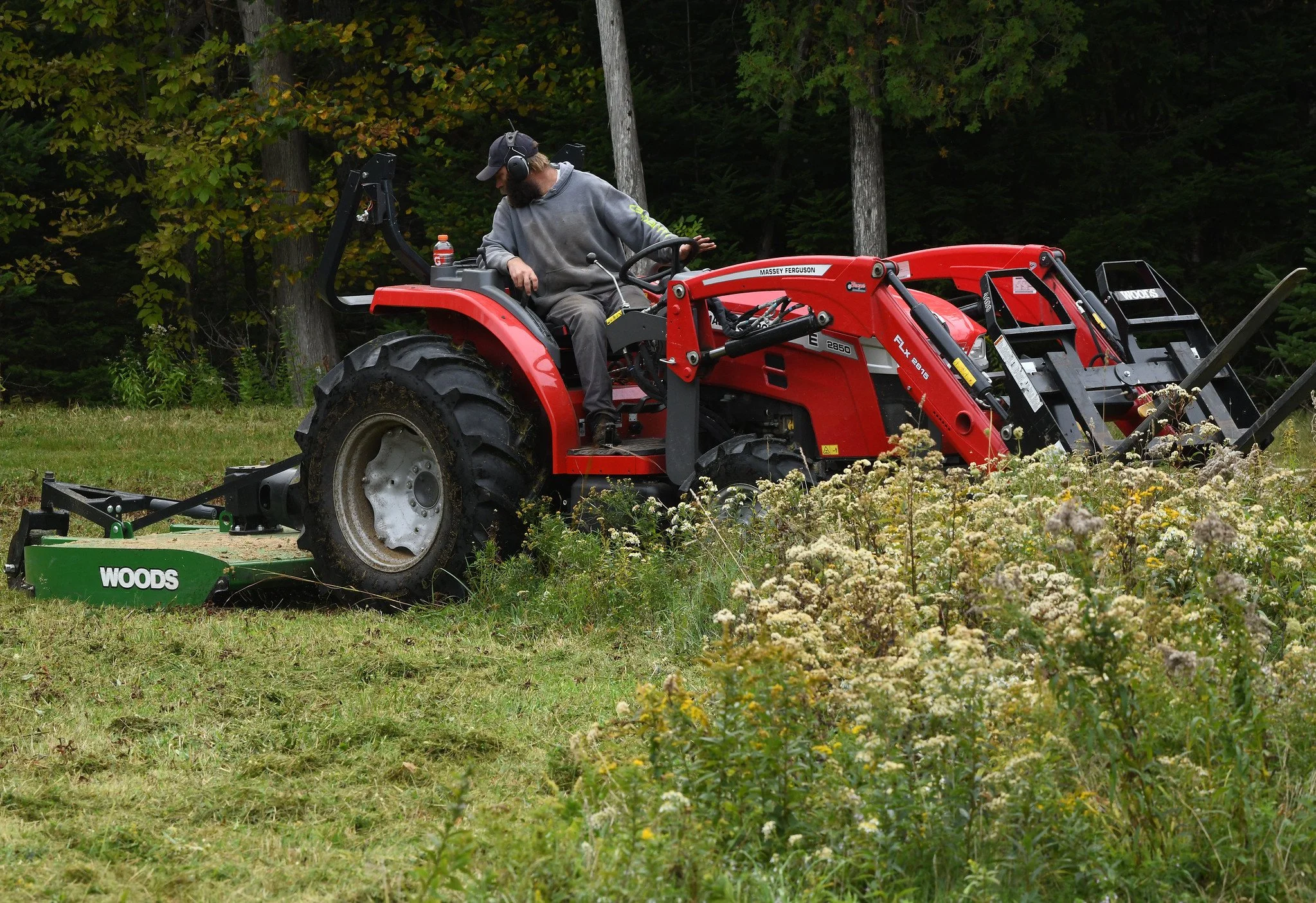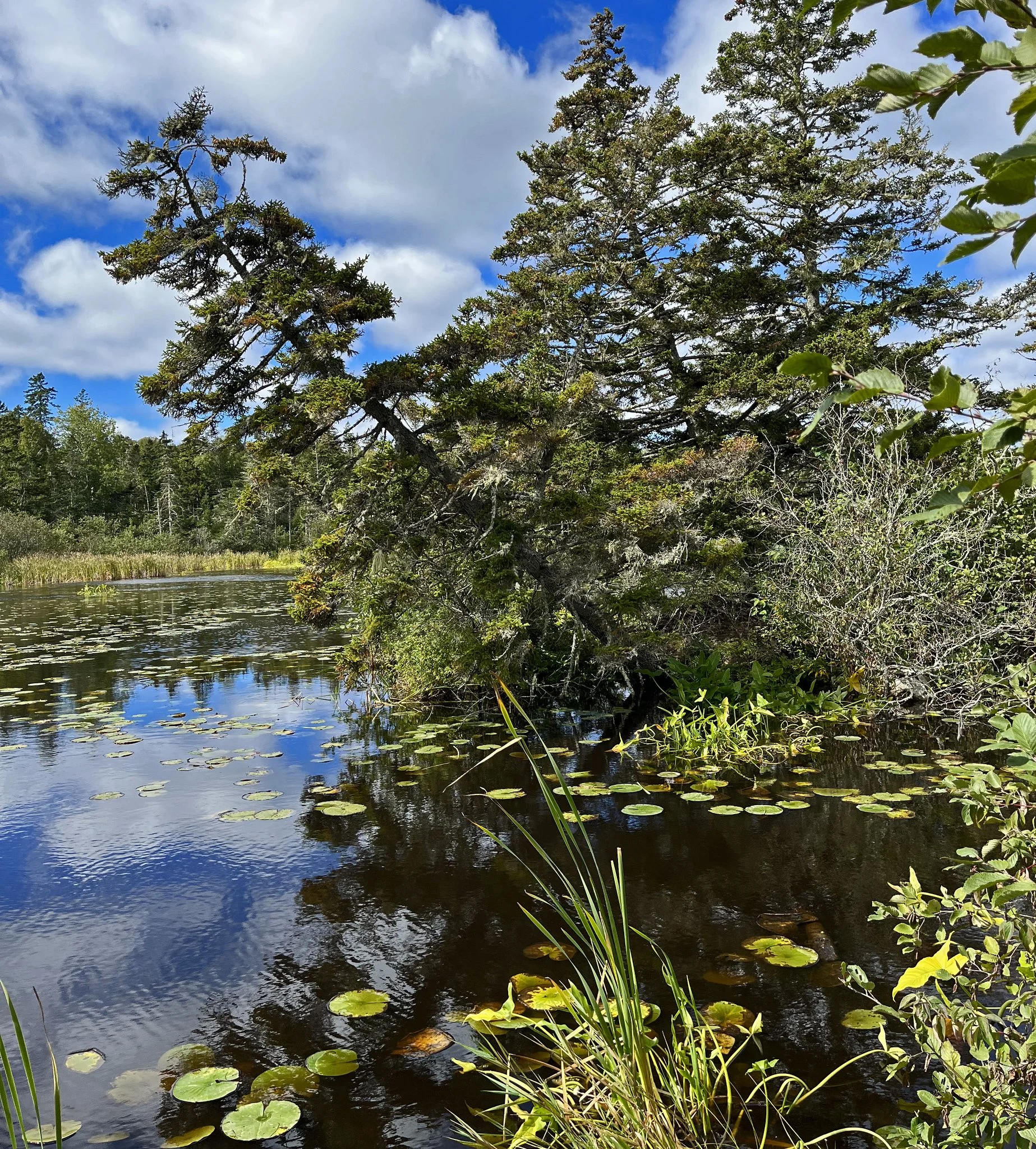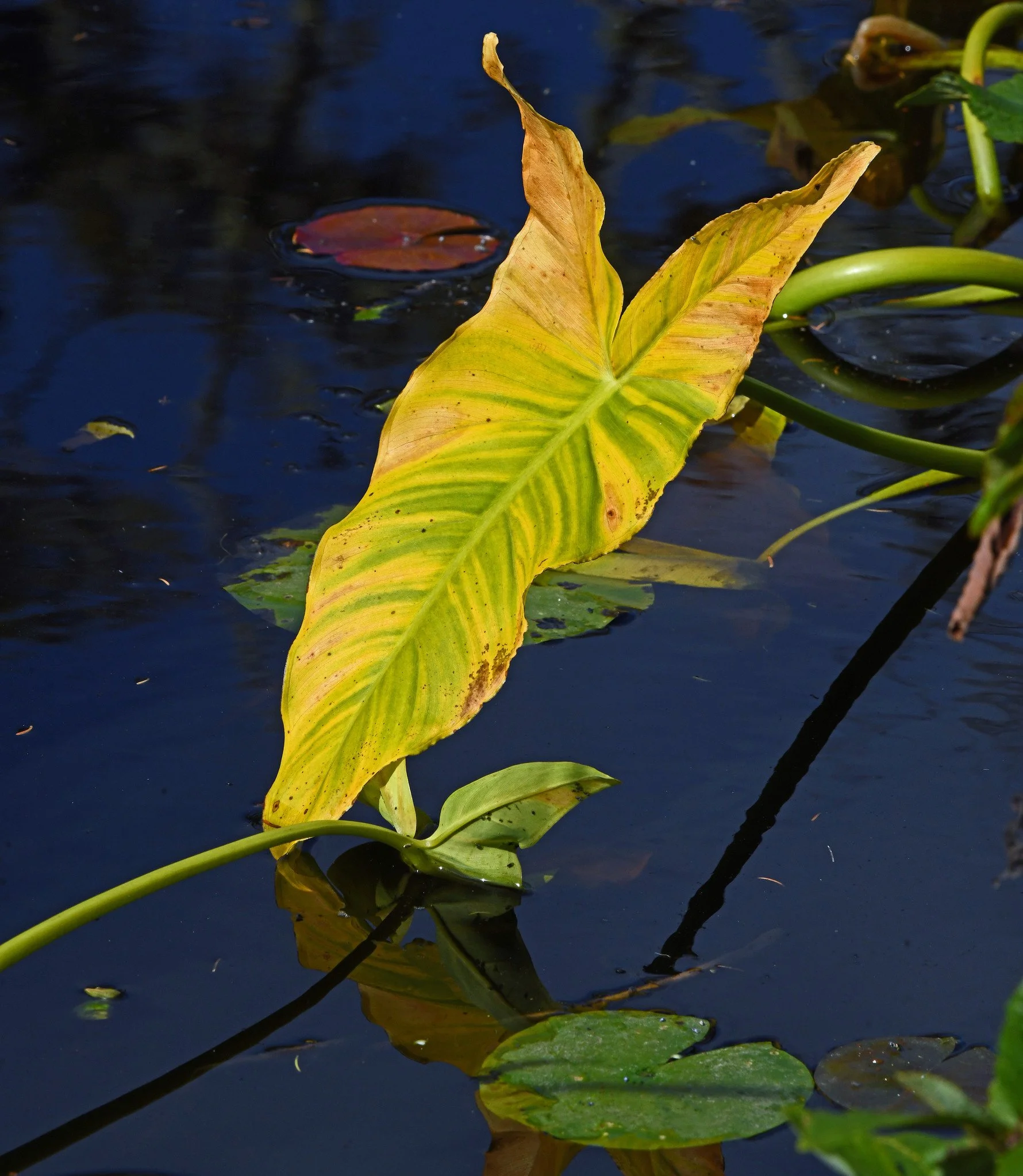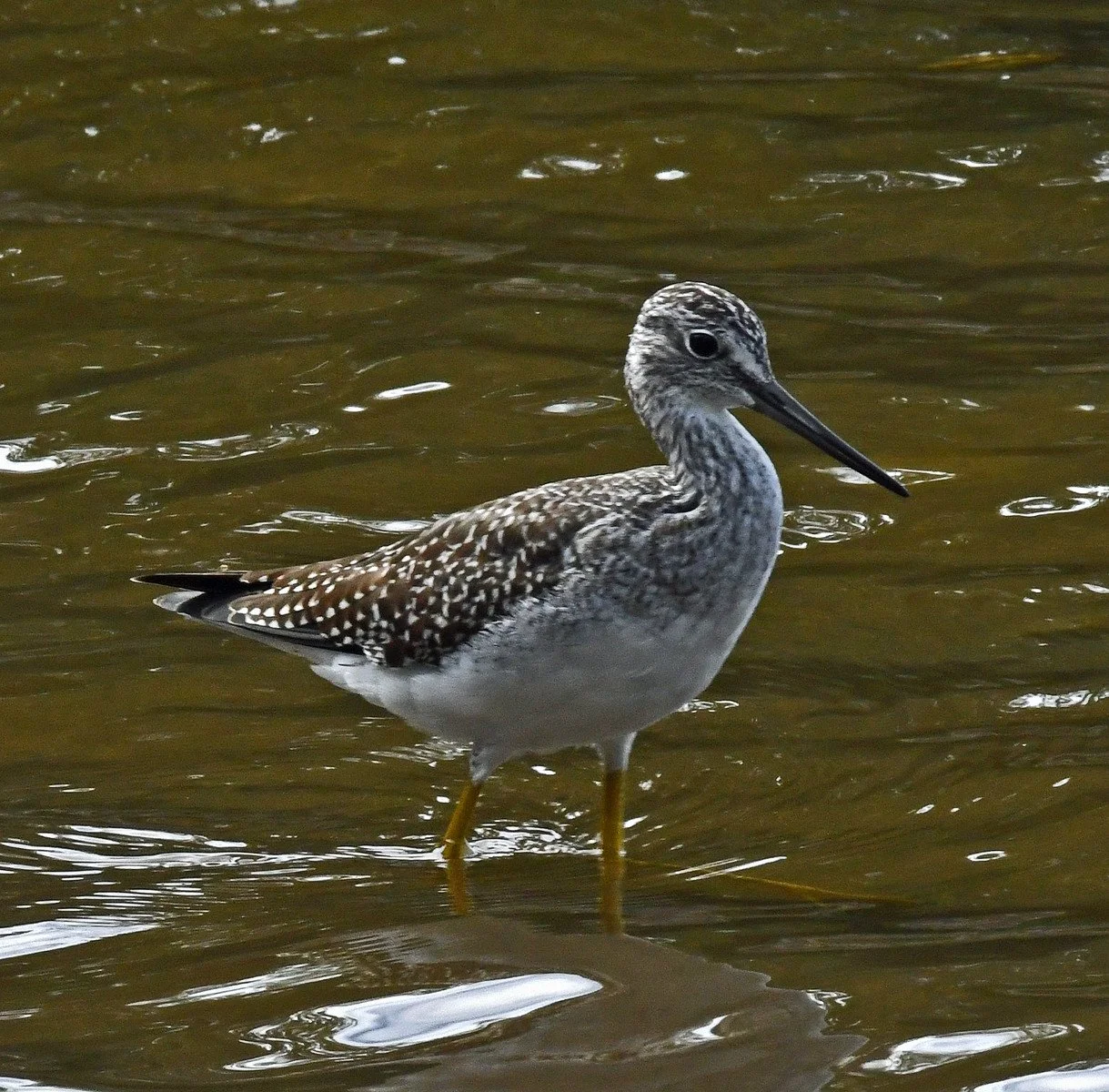Where do good little summer boats go in winter? If they’re lucky, they and their colleagues will get tucked into a convivial boatshed that has character. Others will find themselves in a barn, garage, commercial storage, or (poor things) in a back yard under a tarp or wrapped in plastic. Around here, the luckiest little summer boats get tucked into the boatsheds at the WoodenBoat School and Brooklin Boat Yard, both of which have a welcoming character and a view.
Above, you see the partially filled WBS shed yesterday. The BBY shed, which appeared almost full yesterday, is shown below:
That BBY shed is old and conventional, with large double doors at either end and side windows that let in the afternoon light; the doors will be closed when it gets cold. The WBS shed is a panel-and-post structure with small windows at the ends and roof skylights that let in the sun:
When filled, the WBS shed’s windowless panels will seal the boats in, except for a small entry way in the back, which will be used by humans and, sometimes, a maritime-minded racoon who sleeps in the rafters on cold nights. (Images taken in Brooklin, Maine, on October 11, 2022.)





